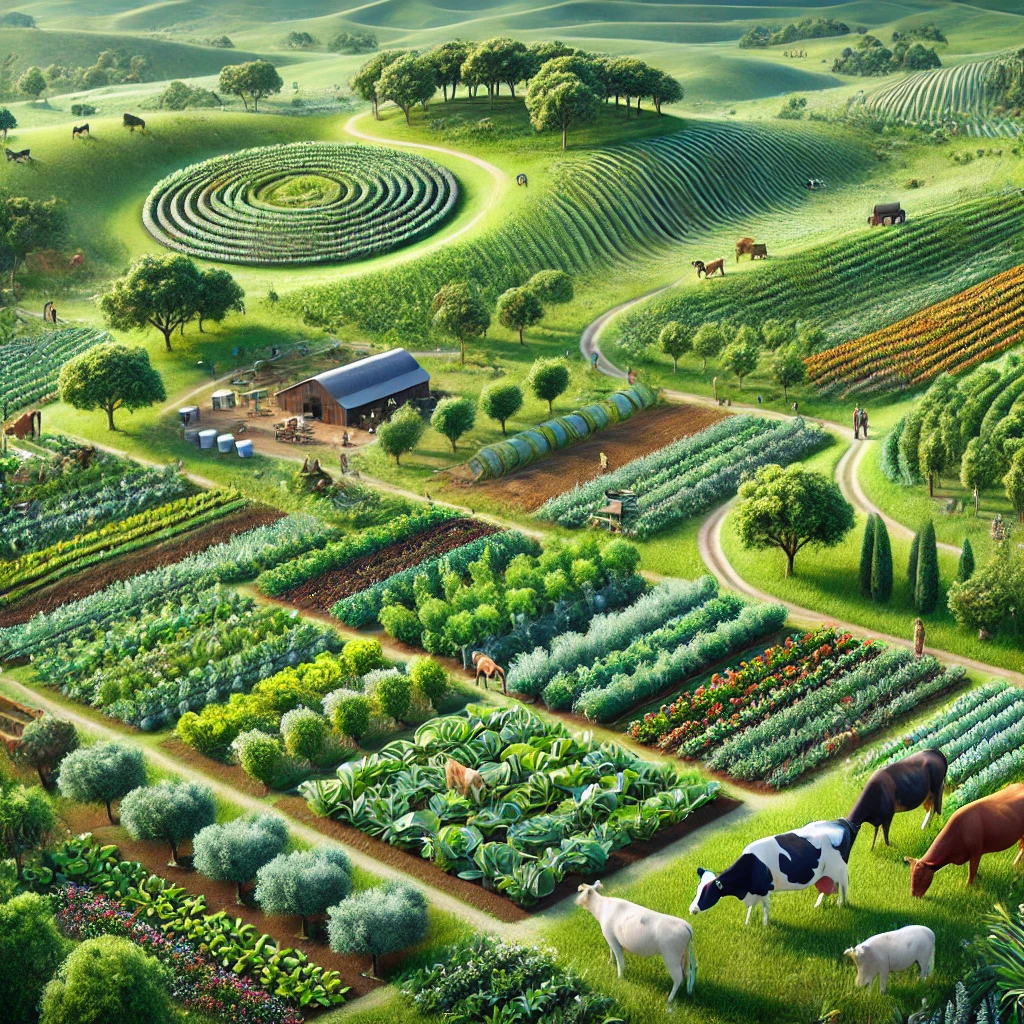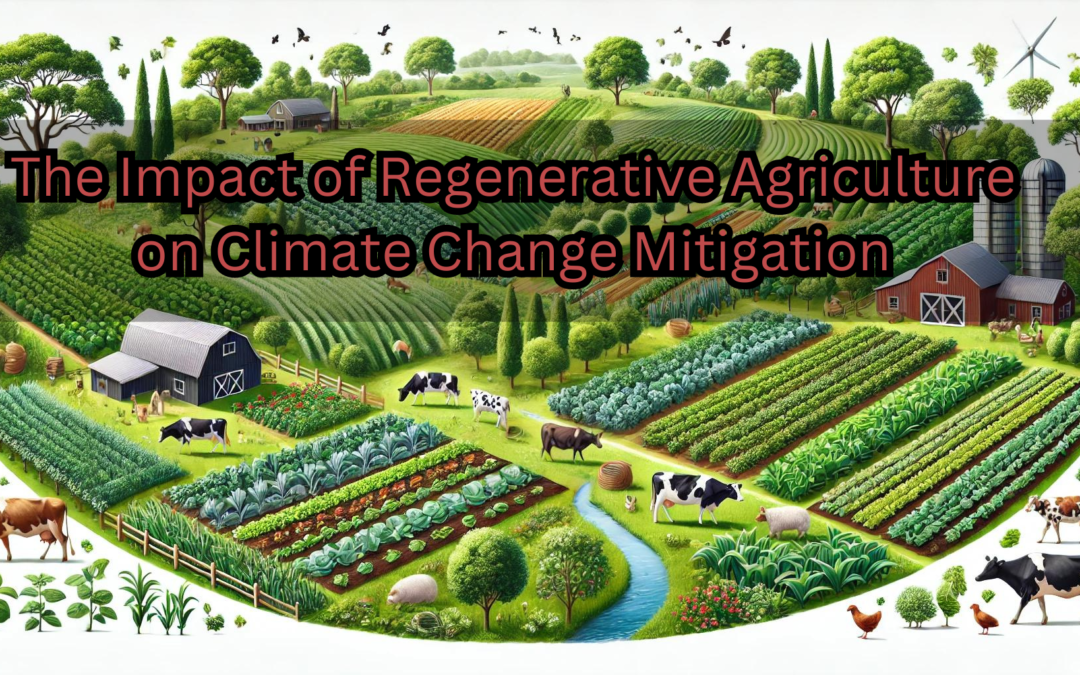Regenerative agriculture, a farming method focusing on ecosystem resilience, biodiversity, and soil health, is becoming increasingly recognized for its potential to combat climate change. This sustainable approach enhances carbon absorption, reduces greenhouse gas emissions, and promotes sustainable land management. Let’s explore how regenerative agriculture practices contribute to mitigating climate change.
Improves Soil Carbon Sequestration
One of the primary ways regenerative agriculture mitigates climate change is by improving soil carbon sequestration. Healthy soils store carbon dioxide (CO2) from the atmosphere in the form of organic matter, making them significant carbon sinks.
“Practices such as crop rotation, cover crops, and no-till farming enhance soil organic matter and boost the soil’s capacity to sequester carbon,” says an expert. For instance, cover crops minimize soil disturbance and replenish soil carbon stores through decomposition, while no-till farming reduces soil disturbance and increases organic matter in the soil.
Planting Trees and Shrubs in Agricultural Landscapes
Agroforestry, the integration of trees and shrubs into agricultural landscapes, is another key component of regenerative agriculture that aids in carbon sequestration. Trees absorb and retain atmospheric CO2 through their biomass and root systems.
By incorporating trees into farming systems, agroforestry provides additional benefits, including improved soil health, increased biodiversity, and enhanced resilience to climate variability. This multipurpose approach helps create resilient and sustainable agricultural systems.

Adoption of Traditional Farming Methods
Regenerative agriculture also reduces greenhouse gas emissions associated with conventional farming methods. Traditional farming often relies heavily on synthetic pesticides and fertilizers, leading to increased emissions of potent greenhouse gases like nitrous oxide (N2O).
“Regenerative practices such as integrated pest management (IPM) and the use of organic fertilizers lower emissions by reducing the need for chemical inputs,” explains a specialist. Composting and nutrient recycling further contribute to emission reductions by fostering natural nutrient cycles.
Livestock Management in Regenerative Agriculture
Regenerative livestock management plays a significant role in mitigating climate change. Techniques such as rotational grazing and multi-species grazing improve pasture health, increase soil organic matter and reduce ruminant methane emissions.
For example, rotational grazing promotes plant growth and soil carbon sequestration by allowing pastures to recover. By maintaining diverse, healthy pastures, regenerative livestock management mitigates climate change impacts while supporting sustainable meat and dairy production.
Biodiverse Farming Systems Enhance Resilience
Furthermore, regenerative agriculture enhances resilience to climate change by strengthening agricultural systems’ resistance to extreme weather. Healthy soils with high organic matter content exhibit superior water retention and infiltration capabilities, reducing drought and flood risks.
Biodiverse farming systems, more resistant to pests, diseases, and climate variability, ensure stable food production and food security despite changing climatic conditions.
Conclusion: The Role of Regenerative Agriculture in Climate Change Mitigation
Regenerative agriculture plays a crucial role in mitigating climate change by enhancing soil carbon absorption, reducing greenhouse gas emissions, and fostering resilient farming systems. By prioritizing soil health, biodiversity, and ecosystem resilience, regenerative agriculture offers a viable and effective approach to addressing the environmental challenges posed by climate change.
As the world seeks solutions to mitigate and adapt to climate change, regenerative agriculture stands out as a key strategy for creating a more resilient and sustainable future.
Be part of the Action: Join Our EAT Community
Join our EAT community to watch weekly regenerative live webinars and learn more about how you can contribute to sustainable and resilient agricultural practices.
P:S – For more information on regenerative agriculture, visit EAT Community.
Related Articles and Resources:
- Regenerative Agriculture and The Future of Pollinator Health
- Forest Health and Resilience: Navigating the Challenges of Climate Change
- Carbon Farming: Innovative Farming Practices to Adopt
- Could Atmosphere CO2 Levels be Reduced by Planting Trees?
- ORGANIC VS. CONVENTIONAL FARMING
- Sustainable Forest Management: Nurturing Prosperity and Resilience
- Soil Carbon Storage



